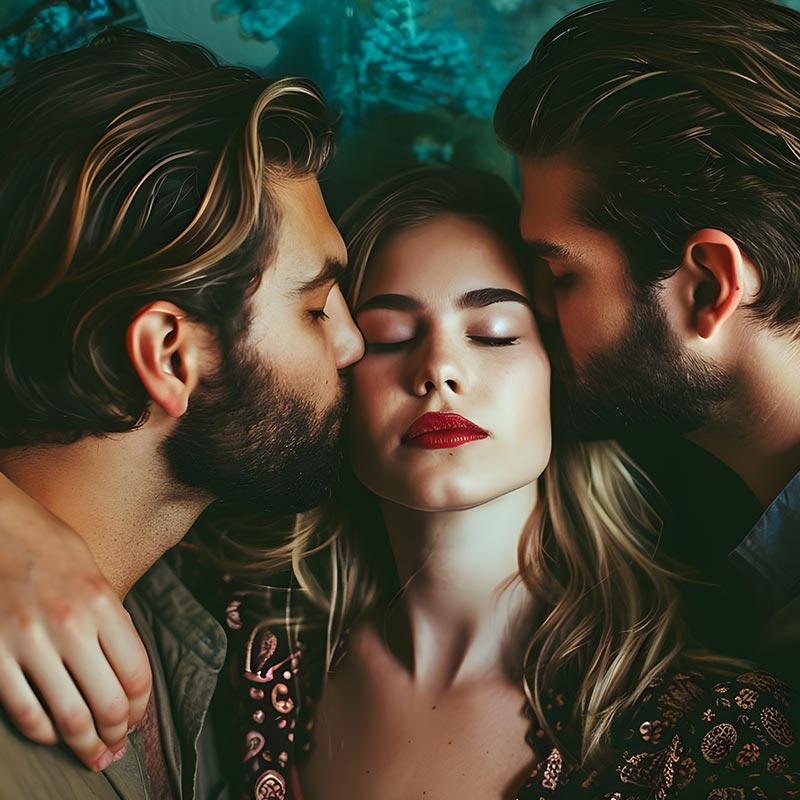Have you ever wondered where the terminology we use to describe human sexuality comes from, or what it really means? Here is a breakdown of some commonly used sexuality (not sex act) terms– including their meanings and their origins. While some of this info is outdated, it does provide a foundation for the evolution of sexual orientation language today. Let’s discuss the terms and origins of categorizing sexual orientation.
When we talk about human sexuality and identity, these common terms can be very useful, informative and can hold a lot of meaning to individuals and their communities. But, it’s important to note that before a few hundred years ago, sexuality simply wasn’t categorized as it is today– only sex acts themselves were.
The Kinsey Scale

Many of these terms originate before Alfred Kinsey introduced the Kinsey Scale in 1948, as part of the Kinsey Report, which rates sexual proclivities on a scale of 1-6, while those with no sexual attractions to others receive an X rating.
Rating Description
0 Exclusively heterosexual
1 Predominantly heterosexual, only incidentally homosexual
2 Predominantly heterosexual, but more than incidentally homosexual
3 Equally heterosexual and homosexual
4 Predominantly homosexual, but more than incidentally heterosexual
5 Predominantly homosexual, only incidentally heterosexual
6 Exclusively homosexual
X No socio-sexual contacts or reactions
The Nomenclature of Sexuality
Heterosexuality

This term originated in 1890 and is used to describe a person who has a pattern of being romantically and/or sexually attracted only to members of the opposite sex. Often shortened to “hetero,” this word didn’t become a part of everyday speech until the 1960s. This term has Latin and Greek origins and is literally translated to say, “another sex.”
Other slang terms include: straight, breeders and heteronormative. Heterosexual people who have vaginal sex must use condoms, like the Wink Slider Condoms with Aloe, and/or other contraceptives in order to have control over their family planning and reproduction as well as using flavored condoms and dental dams for oral and condoms for anal sex for STD prevention. On the Kinsey Scale, heterosexuals would receive a test score of 1 or 2.
Homosexuality

Derived from ancient Greek, this word literally means, “same sex,” but is used to describe a pattern of romantic and sexual attraction to members of the same sex. This term was first coined in 1869, but the words gay, lesbian and queer came much later in the 20th century.
Lesbos was a Greek island which was home to a 6th century female poet named Sappho, who loved other women, hence the terms, “lesbos,” and, “lesbians.” Although homosexual’s anatomy prevents them from having offspring through penetrative sex, condoms like the Lifestyles Tough and dental dams are still necessary in order to prevent the spread of STDs. On the Kinsey Scale, homosexuals would receive a test score of 5 or 6.
Bisexuality

This term applies to those who have a pattern of having a similar level of romantic and/or sexual attraction to both males and females. The term translates to, “two sexes,” from ancient Greek. On the Kinsey Scale, bisexuals would receive a test score of a 3 or 4.
Often abbreviated as “bi,” other euphemistic references include, “swings both ways,” and, “plays for both teams.” Bisexuals are potentially at risk for both unwanted pregnancy and STDs, so condoms, like the Caution Wear Black Ice, and dental dams are necessary in order to have safer sex.
Pansexuality

Not to be confused with bisexuality, which predates pansexuality and can bee seen as limiting or exlusionary, pansexuality comes from the ancient Greek word pan, meaning, “all-inclusive.” Pansexual people have a pattern of being sexually and romantically attracted to people of any gender or gender identity, and do not distinguishing between gender constructs and therefore rejecting the gender binary.
Pansexuals are often referred to as, “omnisexuals,” and, “polysexuals,” because pansexuals have an open attraction to all genders, including androgynous, cisgender and transgender men and transgender women.
Asexuality

It’s unclear as to when this term was officially established, but awareness of asexuality has been steadily growing since the advent of the internet. A literal translation from Latin would be, “not sexual.”
On the Kinsey Scale, asexuals would receive a test score of X, because asexual people do not experience any sexual attraction to others. However, this is not to be confused with romantic relationships, because asexuals often have these, despite a lack of sexual desire.
Demisexuality

The word demi stems from Middle English and means, “half,” or, “one that partly belongs to,” which makes perfect sense since demisexuals are considered to be in between sexual and asexual.
Because demisexuals must form an intense emotional and romantic bond in order to become sexually attracted to someone, they fall into a type of asexuality, often called the grey-A. Demi can also be used as prefix to other sexual identities such as demi-homosexual.
